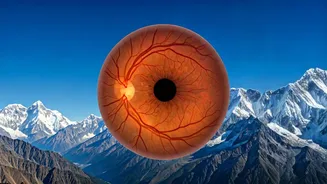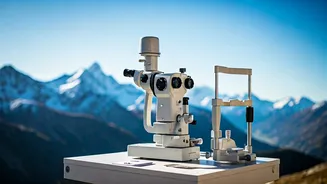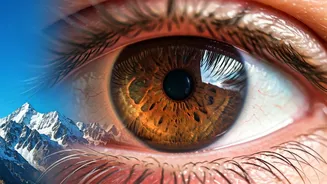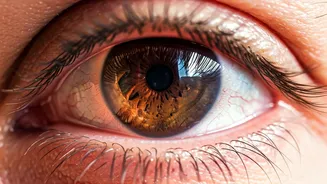Altitude and Eyesight
The thin air at high altitudes can lead to several health issues, and one of them is the sudden loss of vision. This problem is often associated with High
Altitude Retinopathy (HAR). HAR affects the retina, the light-sensitive tissue at the back of the eye. While the exact reasons for this vision loss aren't completely understood, several factors play a role. These include reduced oxygen levels (hypoxia) and changes in blood flow within the eye. These changes can damage the small blood vessels in the retina, leading to swelling, bleeding, and eventually, vision impairment. Knowing the risks and taking preventative measures are vital for anyone planning high-altitude treks.
How Common is HAR?
Altitude-related vision loss or HAR isn't as common as some other altitude-related illnesses, but it's still a significant concern. The prevalence of HAR varies depending on factors such as altitude, the speed of ascent, and individual susceptibility. Studies indicate that HAR becomes more likely at elevations above 12,000 feet (approximately 3,658 meters). However, it is essential to remember that even at lower altitudes, some individuals might be at risk. The severity of the condition can also range from mild blurring of vision to severe vision loss. It is crucial for trekkers to be aware of the potential risks and know what to look for, especially during treks at higher elevations.
Risk Factors Involved
Certain individuals are more prone to developing HAR. Factors like rapid ascent to high altitudes, pre-existing health conditions, and individual physiology contribute to vulnerability. People with conditions that affect blood circulation, such as high blood pressure or diabetes, might be at increased risk due to pre-existing damage to blood vessels. The rate of ascent is also crucial. Ascending too quickly doesn't allow the body to acclimatize to the altitude, increasing the chances of HAR. Moreover, genetics and individual responses to altitude can play a part. Being aware of these risk factors can help trekkers make informed decisions and take necessary precautions to safeguard their vision.
Early Warning Signs
Recognizing the early warning signs of HAR is critical for preventing severe vision loss. Trekkers should be vigilant for symptoms such as blurred vision, particularly in the center of their sight. Other signs include seeing floaters or spots in their field of vision. Eye pain or discomfort, including headaches, could indicate an issue. Headaches often accompany this. If a trekker experiences any of these symptoms while at altitude, they must immediately descend to a lower elevation. Seeking medical attention promptly is also essential, as early intervention can help prevent further damage to the retina and preserve vision. Immediate action is critical.
Eye Protection Measures
Several preventative measures can help trekkers protect their eyes before and during high-altitude travel. Acclimatization is the most crucial step. Ascending gradually allows the body to adapt to the lower oxygen levels, reducing the risk of altitude-related illnesses, including HAR. Wearing sunglasses with UV protection is essential to shield eyes from the sun's glare, which is more intense at higher altitudes. Staying hydrated helps maintain good blood flow, which in turn benefits eye health. Avoid excessive exertion, especially during the initial acclimatization period. Lastly, consulting with a doctor before the trek to discuss any concerns or underlying health conditions is highly recommended.
Next Steps Needed
In the event of blurred vision or eye pain at altitude, the immediate next step is to descend to a lower elevation. This is the most effective way to reduce the impact of altitude on the body and eyes. Do not ignore the symptoms. Seek medical evaluation promptly. A medical professional can assess the extent of the damage and provide appropriate treatment. Rest, good hydration, and avoiding further exertion are also crucial. Follow any medical advice provided by healthcare professionals. Rapid descent and prompt medical care can minimize the damage and increase the chances of a full recovery from altitude-related vision loss.











